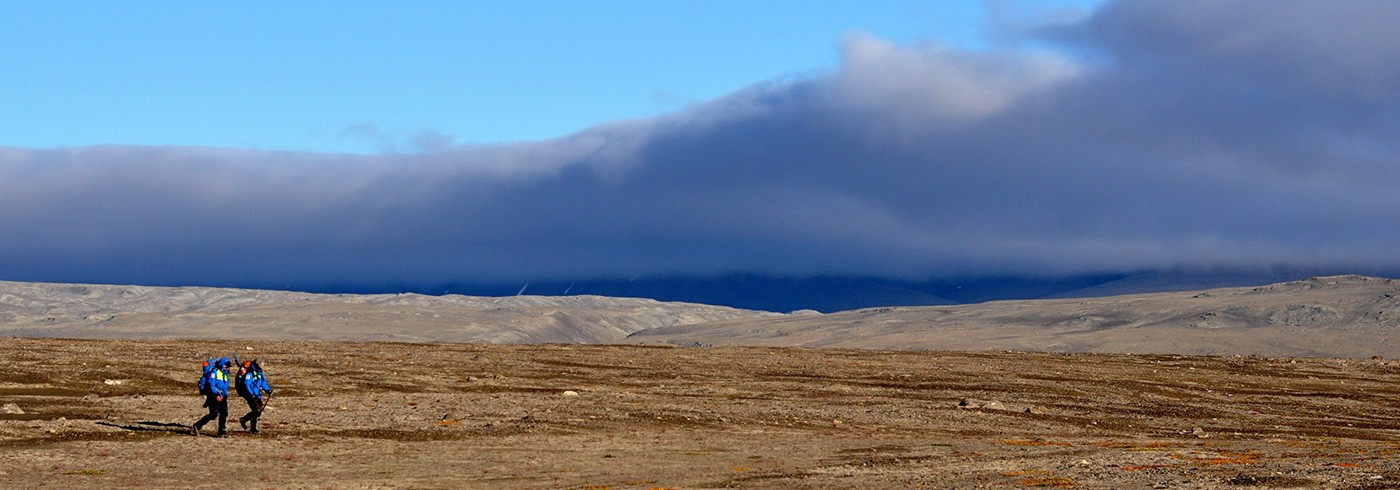After settling our camp in Hall Land, our team started the scientific sampling that is essential to be able to measure the ecosystem structure of this very High Arctic site. We set arthropod traps across a landscape with scattered vegetation to target both flying insects and walking arthropods such as spiders.
Despite the apparent low productivity of the site, we have already recorded several mammal and bird species. For instance, we came across tracks and remains of muskoxen, snowy owls and Arctic foxes. We saw regularly families of shorebirds, such as the beautiful red knots, a species whose populations are in steep declines. In this unforgiving landscape battered by strong winds and low temperature, there are sort of small islands of green vegetation hanging to its roots; and there you can suddenly find a lemming burrow, but also tracks of a passing ermine looking for a welcome meal, all of which can enrich the soil for, say a network of purple saxifrage flowers.
To capture the abundance and diversity of such patchy life system, our sampling scheme was to randomly distribute several transects of vegetation plots closely linked to bird and mammal observation but also to arthropod traps. Altogether, we should get a quantitative estimate of species presence and interactions. To do so, many hours of long walks are necessary and allow us to work as a team and enjoy a large and beautiful valley of Greenland.


